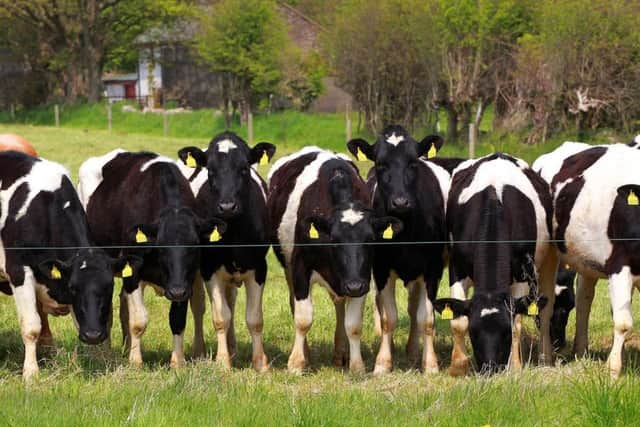Leptospirosis '“ A risk to your herd and your health


Leptospirosis is also a zoonosis – it can cause disease in humans. All those working with stock are potentially at risk. Clinical signs of the disease in humans are flu-like, with headaches and fever, occasionally progressing to meningitis.
Leptospirosis is a zoonotic disease which can be acquired from contact with urine, afterbirth or aborted foetus of an infected animal.
Advertisement
Hide AdAdvertisement
Hide AdThere are two serovars of Leptospirosis commonly found in cattle in Ireland;
Leptospira interrogans hardjo and Leptospira borgpetersenii hardjo
Leptospirosis circulates in a herd by direct transmission from infected animals (new infections or carrier animals) or by indirect transmission through urine, birth fluids, milk, contaminated water or other species e.g. sheep. Leptospirosis is very difficult to eradicate as some cows can become carriers. Leptospires can also survive for up to six weeks in wet soil and stagnant water or slow moving streams.
Clinical Signs of
Leptospirosis
Early signs are usually mild and transient and therefore may go unnoticed. The most common clinical signs include:
• Milk drop - A sudden decrease in milk yield
Advertisement
Hide AdAdvertisement
Hide Ad• Abortions - Usually occur 6-12 weeks after the initial infection.
Abortion rates may be up to 30% in a herd infected for the first time.
• Infertility - Low pregnancy rates and therefore increased culling due to low fertility
• Weak calves – Infection in late pregnancy can result in the birth of weak calves that die within a few hours of birth
Diagnosis of
Leptospirosis
Based on:
Advertisement
Hide AdAdvertisement
Hide Ad• Blood sampling and looking for high antibodies level in affected animals (which can prove difficult as often the infection were present six-12 weeks before clinical signs become apparent e.g. low pregnancy rates picked up at scanning)
• Culture of urine samples
• Leptospiral abortion diagnosis is best based on finding bacteria in the foetus
Speak to your vet about investigating Leptospirosis in your herd.
Control of Leptospirosis
• Isolation of the sick cow and aborting cow
• Biosecurity - Avoid the introduction of infected animals
- Quarantine until test negative
- Double fencing at perimeters
• Vaccination - The only practical way of controlling Leptospirosis
Timing of Vaccination
Advertisement
Hide AdAdvertisement
Hide AdIt is essential to vaccinate heifers before their first pregnancy. The primary vaccination course consists of two injections four-six weeks apart and thereafter an annual booster before turnout and at least two weeks before breeding. It is a 2ml dose, given under the skin to all cattle >1 month of age. The correct use and timing of vaccination are vital to their success, always read the manufacturers recommendations.
Why vaccinate with Leptavoid-H?
• Leptavoid-H is the only vaccine licensed to protect against both strains of Leptospira hardjo.
• Leptavoid-H is the only vaccine that is licensed to improve conception rates where Leptospirosis has been diagnosed as a cause of infertility.
• Leptavoid-H can be used on the same day as Bovilis BVD (to cattle >8 months of age).